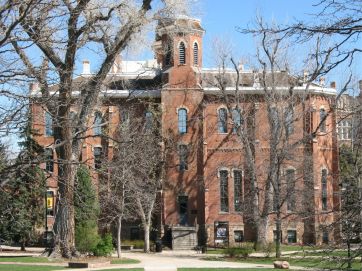Boston University’s campus along the Charles River was mutilated over the years by various road-building projects. It lost its waterfront to Storrow Drive in 1950, and then got sliced on the other side by the Massachusetts Turnpike in 1965. The construction left some odd remnants of land, including a triangular path of hillside next to the Boston University Bridge. Land is precious to any urban university and it was (and probably still is) pretty frustrating to BU officials to have a parcel that, wedged among major roadways, was completely inaccessible. I remember the expansion-eager headmaster of the BU Academy proposing that we tunnel our way to the site.
To say that it was totally inaccessible is not quite accurate. One spring some students climbed over the rails and fences and found their way into the nameless plot—only to discover the remains of a homeless man who had apparently died there months before.
That was more than a decade ago, but the image comes back to me from time to time, poised somewhere between poignancy and the absurd. How could a man die in the middle of an exposed plot of land passed daily by thousands of students and tens of thousands of cars and go unnoticed all that time? We have an astonishing capacity not to see things in our midst.
On the other hand, I see the aptness of the image for higher education: the vacancy at the center of things surrounded by mere busyness, and inhabited by the ashes of someone entirely forgotten.
Let me hasten to add: No disrespect to BU intended. I spent many years there as a faculty member and administrator during the John Silber years and I value the experience. But even John Silber, a university president of fierce intellectual and institutional ambition, couldn’t do much about the vacancy in the heart of higher education. I refer to the slow disappearance of the sense that higher education has anything genuinely “higher” about it. The notion that the academy should distinguish most important knowledge from the vast realm of knowable stuff somehow began to flicker out—when? The fifties? The sixties? As we lost the confidence to make that distinction, the college curriculum lost its essential shape. In a way, everything became an elective, even if some of the courses were still required.
This has been on my mind because my organization is about to release a report we’ve been working on for the last six months about the vanishing requirement for “Western civilization” survey courses. We went back to college catalogs in the early 1960s and traced the dismantling of this particular piece of the curriculum through to 2010. The decline of Western Civ is more than the jettisoning of a particular course. When it was widely taught as a real or de facto general education requirement, it provided an armature for the whole liberal arts curriculum. The study of almost everything else—math, science, art, literature, political theory—fit together as a part of a larger historical narrative.
Western Civilization came under criticism as inextricably ethnocentric, racist, imperialist, sexist, and an obstacle to achieving diversity, multiculturalism, and broader forms of understanding. But it would not be accurate to say that it was replaced in the curriculum by any of these new rubrics. It was replaced by nothing—by vacancy, by mere entropy. The multicultural curriculum is proudly “de-centered,” and the logic that prevails in the liberal arts today is the logic of “anti-foundationalism.” We need not “privilege” any one way of knowing. We can have pluralism all the way through. This doesn’t mean that the “center” actually disappeared. It is still there, just as Western civilization is still there. It has just been left vacant, unattended, and littered with the stuff no one particularly wants. It is Strongbad’s turf. Population: tire.
I’m reluctant to give such brief obsequies at its grave. I have much more to say on the topic but I’m trying to turn over a new leaf by offering some briefer forms of commentary. I will have more to say about the National Association of Scholars' new report when it is issued. And I will have more to say about ashes, dust, and the unburied dead in some comments on two remarkable new books, Ann Fabian’s The Skull Collectors and Cynthia Eller’s Gentlemen and Amazons, both of which deal with long interred nineteenth century scholarship that has come back to haunt us.
This article was originally published on the Chronicle of Higher Education's Innovations blog.













